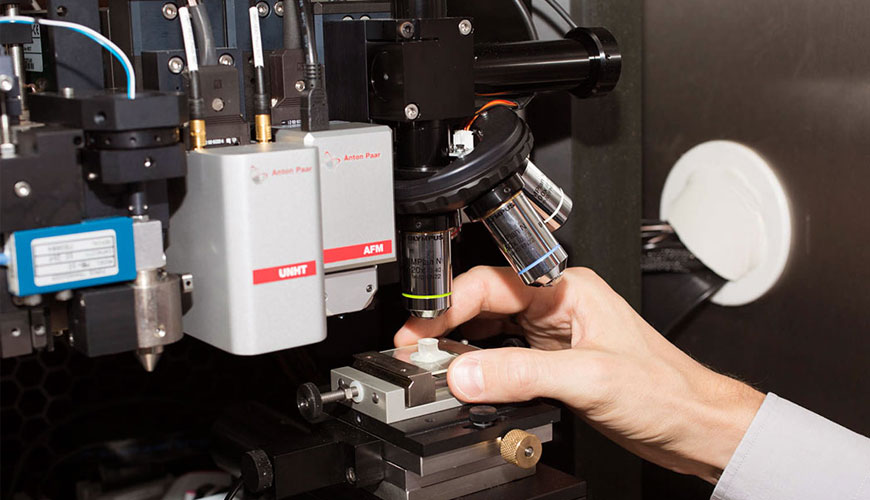

EUROLAB laboratory provides testing and compliance services within the scope of ISO 2039-1 standard. Developed by the International Standards Organization (ISO), this part of the ISO 2039 standard specifies a method for determining the hardness of plastic and ebonite through a loaded ball indenter. The ball indentation hardness determined by this method can provide data for acceptance or rejection under research and development, quality control, and specifications.

The method consists of forcing a ball to the surface of the test sample under a certain load. Print depth is measured under load. The surface area of the dimension is calculated from its depth. Ball indentation hardness is then calculated from the relation ball indentation hardness = applied load/impression surface area.
Each test specimen should be a flat sheet or block of sufficient size to minimize edge effects on the test result; eg 20 mm ¥ 20 mm. The surfaces of the test specimen shall be parallel. A thickness of 4 mm is recommended. The supported surface of the test specimen should not show any deformation after the test.
If test specimens less than 4 mm thick are to be tested, it is possible to stack several test specimens on top of each other. However, the hardness values obtained in stacked test specimens and single test specimens of the same thickness may be different.
Although every effort is made to ensure sample parallelism, there are some instances, particularly injection molded samples from semi-crystalline thermoplastics, where perfectly flat test samples are difficult to obtain. If such slightly curved test specimens are used, some of the measured "pressure depth" will actually correspond to the distance traveled by the indentation when pressing the test specimen against the backing plate.
This difficulty can be overcome by using a circular support plate (10 1) mm in diameter. This diameter is also large enough for perfectly flat test specimens. It is also recommended that the test specimen be placed with the flat side facing the backing plate.
Among the services provided by our organization within the framework of material testing services, there are also ISO 2039-1 standard tests. Do not hesitate to contact our laboratory EUROLAB for your testing and certification requests.
To get an appointment, to get more detailed information or to request an evaluation, you can ask us to fill in our form and reach you.